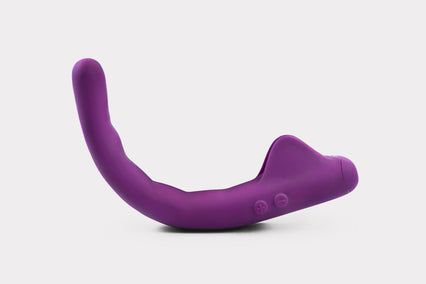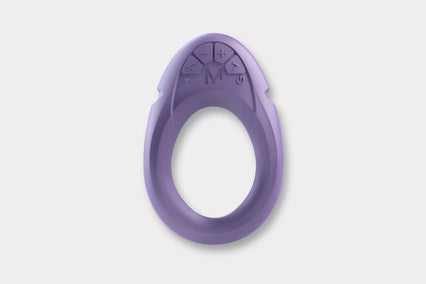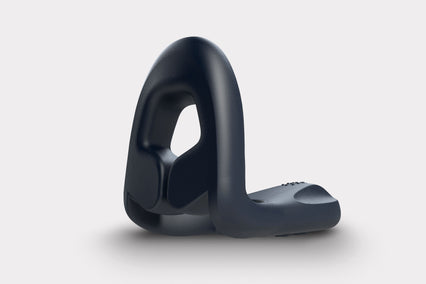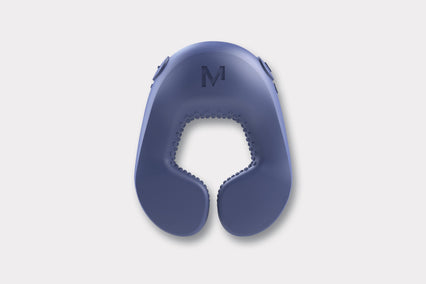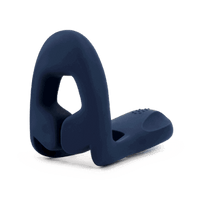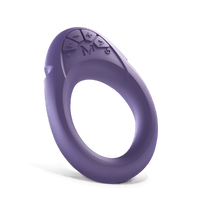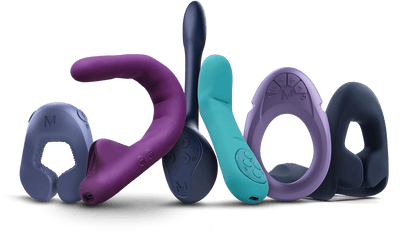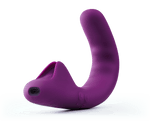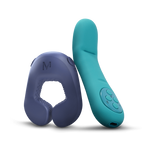Hot flashes, mood swings, vaginal dryness, menopause is often defined, and dreaded, by these symptoms, and because of this, one of the biggest questions many women and their partners have is how long does menopause last. Do these symptoms ever end, and when will your sex life recovery after menopause?
The truth is that many people still don't understand when menopause begins or ends. It’s not just a single moment but a journey that unfolds over several years (maybe longer than you realize). While the symptoms can feel overwhelming, most women do find relief as time goes on, and many discover new ways to enjoy their new bodies and even have a satisfying sex life. It starts with understanding the symptoms, knowing how long each stage typically lasts and what to expect along the way. So, without further ado - let's unpack the “pause” life.
What is menopause?
Let’s start with definitions, because even this one isn’t completely understood. Menopause is defined as the point when a woman has gone 12 consecutive months without a menstrual period, marking the end of ovulation and fertility. It’s a natural biological process, not a sudden event, and typically occurs around the age of 51, though the normal range can be anywhere from the mid-40s to the mid-50s.
While menopause itself is just a single marker in time, the changes leading up to it can begin years earlier. Many women notice symptoms such as irregular cycles, hot flashes, or changes in mood well before their final period. These shifts happen as hormone levels, particularly estrogen, begin to decline. This is known as the menopausal transition, and the transition is typically what most people are asking about, and this is where it gets complicated.
The menopause transition is split into three phases:
- Perimenopause: The transition leading up to menopause.
- Menopause: The official milestone reached after 12 consecutive months without a period, signaling the end of ovulation and fertility.
- Postmenopause: The years after menopause, when estrogen remains low. This is the new norm.
What’s the difference between menopause, perimenopause, and postmenopause?
The phases of menopause can feel confusing because people often use the terms interchangeably. To make sense of it, it helps to break down the differences between perimenopause, menopause, and postmenopause so you can identify what you’re experiencing.
Perimenopause: This is the stage that leads up to menopause, and for many women, it’s the most noticeable part of the journey. Perimenopause starts up to 10 years prior to menopause. Hormone levels, especially estrogen, gradually rise and fall during this time, causing cycles to become irregular and symptoms such as hot flashes, night sweats, mood swings, and vaginal dryness to appear. This phase usually begins in a woman’s 40s, though it can start as early as mid 30s.
Menopause: Menopause itself is not a drawn-out stage but a specific milestone - the point when you’ve gone 12 consecutive months without a menstrual period. At this stage, ovulation has stopped, fertility has ended, and the hormonal fluctuations of perimenopause settle into a consistently lower level. After this milestone is officially recognized, you are in postmenopause.
Postmenopause: This is the phase that continues for the rest of your life. Some symptoms may gradually ease, but others can persist long term due to the ongoing decline in estrogen.
How long does menopause last
Menopause is, as mentioned above, a milestone describing when a woman has not had a menstrual period for 12 months. However, how long it lasts isn’t a simple answer. Menopause is a multi-year transition, but the length varies widely from person to person. To keep it clear, think in terms of phases and typical ranges, rather than a single number.
Average menopause timelines:
- Perimenopause: Starts up to 10 years prior to menopause with irregular cycles, hot flashes, dryness, mood changes.
- Menopause: A single milestone - 12 consecutive months without a period, average age 51, but can vary.
- Postmenopause: Lifelong after the menopause has been officially reached.
Lifestyle, genetics, and overall health all play a role in how long symptoms of each phase last and how intense they feel.
Factors that might influence menopause
Every woman experiences menopause differently, and part of that variation comes down to individual factors. While age and biology set the stage, several lifestyle and health elements can influence when menopause begins and how long symptoms last:
- Genetics: The age at which your mother or sisters reached menopause often provides clues about when you might start.
- Smoking: Women who smoke tend to reach menopause earlier and may experience stronger symptoms.
- Medical treatments: Cancer therapies such as chemotherapy or radiation can trigger early menopause. Surgical removal of the ovaries causes what’s known as “sudden” or surgical menopause.
- Health conditions: Autoimmune diseases, thyroid disorders, or certain chronic illnesses can affect hormone levels and alter the menopausal timeline.
- Body weight and lifestyle: Higher body mass index, diet, alcohol use, and stress levels can all influence the intensity and duration of symptoms.
Because these factors interact differently in every person, menopause doesn’t follow a strict schedule. For some, the transition is shorter and less disruptive, while for others it lasts longer and feels more intense.
Common symptoms of menopause
Menopause affects more than just the menstrual cycle. As estrogen and progesterone levels shift, a wide range of physical and emotional symptoms can appear. Some are temporary, while others may be longer-lasting. The most common include:
- Hot flashes and night sweats: Sudden feelings of heat, often with flushing and sweating, that can disrupt sleep.
- Irregular periods: Cycles may become shorter, longer, heavier, or lighter before stopping completely.
- Vaginal dryness: Reduced estrogen can make vaginal tissue thinner, leading to discomfort or pain during sex.
- Sleep disturbances: Trouble falling or staying asleep, sometimes linked to night sweats.
- Mood changes: Increased irritability, anxiety, or feelings of low mood.
- Reduced libido: Changes in hormone levels and vaginal comfort can affect desire for sex and cause low libido in women.
- Brain fog: Difficulty concentrating, forgetfulness, or feeling mentally “sluggish.”
- Physical changes: Weight gain around the abdomen, thinning hair, or dry skin.
Every woman’s experience is different - some may only notice a few mild symptoms, while others experience many.
How do you know menopause is over
Once you hit the 12-month milestone of no periods, you’ve technically made it through menopause, and this marks the beginning of postmenopausal life. However, colloquially, most people use the phases of menopause and postmenopause interchangeably. Therefore, menopause - or the end of fertility - lasts until the end of a woman’s life. Now, if you’re asking when menopause symptoms will end, that’s a different question. For most, menopause symptoms continue to last at varying degrees and intensities until the end of life. But again, every woman’s experience is different, and each person will need to adapt different menopause management techniques.
How to manage menopause symptoms
There’s no single approach to managing menopause symptoms, but many women have success by combining healthy habits and other treatments can make the transition easier.
1. Adopt healthy lifestyle changes
Exercise, diet, and stress management form the foundation of symptom relief. Regular movement improves sleep and mood, while a diet rich in whole foods helps balance energy and reduce weight gain often linked to menopause. Mind-body practices like yoga, meditation, or deep breathing can also help manage hot flashes and irritability.
2. Explore hormone replacement therapy (HRT)
For women with moderate to severe symptoms, HRT can be one of the most effective options. It replaces declining hormones to ease hot flashes, night sweats, and vaginal dryness. Because HRT carries some risks, it should always be considered with guidance from a healthcare provider who can tailor treatment to your personal health profile.
3. Try doctor-recommended intimacy vibrators
Intimacy devices such as the FDA-registered Crescendo 2 and Legato offer menopausal women a way forward menopause to better intimacy. By increasing blood flow and genital stimulation, these doctor-recommended devices help improve the experience of intimacy by improving genital responsiveness, helping with dryness, and bringing confidence back into the bedroom. Both Legato and Crescendo 2 are supported by independent studies published in the Journal of Sexual Medicine to improve arousal and lubrication.
Participants using Crescendo 2 reported increases in self-reported arousal up to 73% and natural lubrication up to 93% as well as improvements in wellbeing during intimate experiences. In another independent study researchers reported that participants using Legato experienced increases in self-reported natural lubrication up to 3x and arousal up to 2x, with no device-related adverse events observed.
4. Consult a menopause specialist
Menopause is highly individual, and what works for one woman may not work for another. A menopause specialist or gynecologist can help you navigate your options, from lifestyle adjustments to prescription therapies, ensuring you receive safe and effective support throughout the transition.
5. Use vaginal moisturizers and lubricants
Declining estrogen can lead to thinning vaginal tissue and dryness that makes intimacy uncomfortable. Vaginal moisturizers like Kindra’s V Hydration Duo help restore comfort, while vaginal lubricants provide immediate relief during sex by reducing friction and enhancing pleasure. Together, they are simple yet effective tools for maintaining vaginal health.
6. Consider vitamin E
Some studies suggest Vitamin E may help with vaginal dryness when applied topically or taken as a supplement. While results vary, it’s a low-risk option that may be worth discussing with your doctor, especially if you prefer non-hormonal approaches to managing symptoms.
7. Improve sleep hygiene
Night sweats and hormonal shifts can disrupt sleep, but small changes to your routine can help. Keeping your bedroom cool, limiting caffeine or alcohol before bed, and practicing consistent sleep and wake times can all improve rest. Better sleep not only reduces fatigue but also makes it easier to cope with other menopause symptoms during the day.
Takeaway
So, how long does menopause last? For most women, the transition spans several years, with perimenopause starting as early as 10 years prior to menopause and symptoms continuing into the early postmenopausal. While the journey can feel unpredictable, it doesn’t have to mean the end of intimacy or comfort. With the right mix of lifestyle changes, medical guidance, and doctor-recommended vibrators, you can navigate menopause on your own terms and keep pleasure a fulfilling part of life. If you’re ready to learn how to have great sex after menopause - you're almost there.

